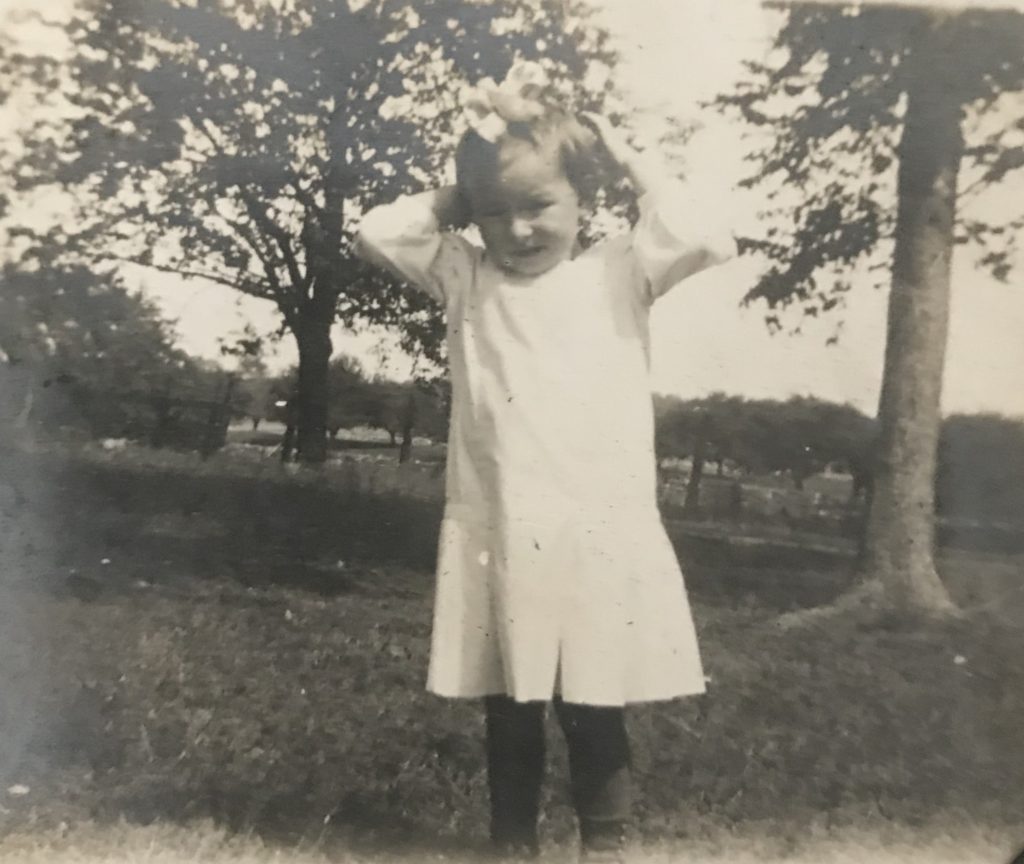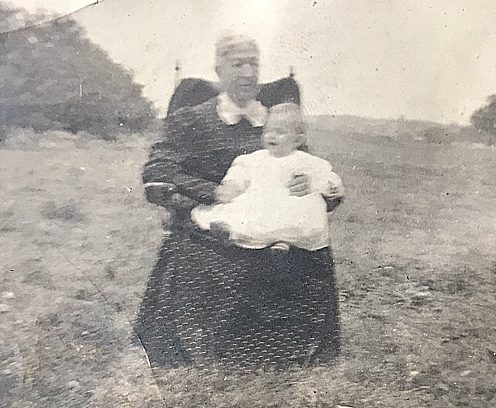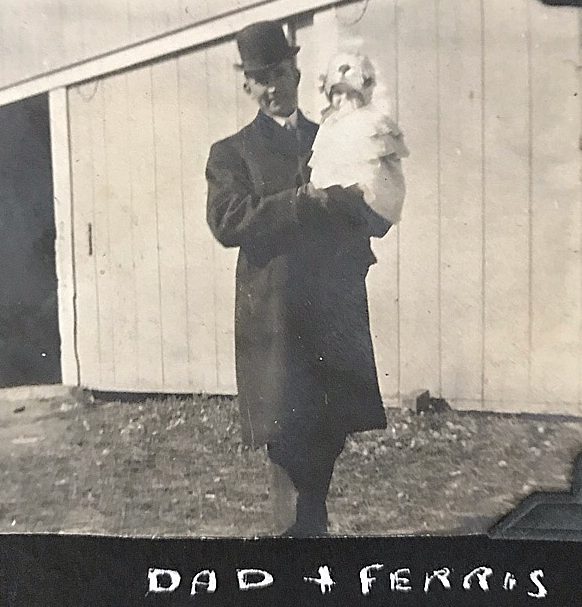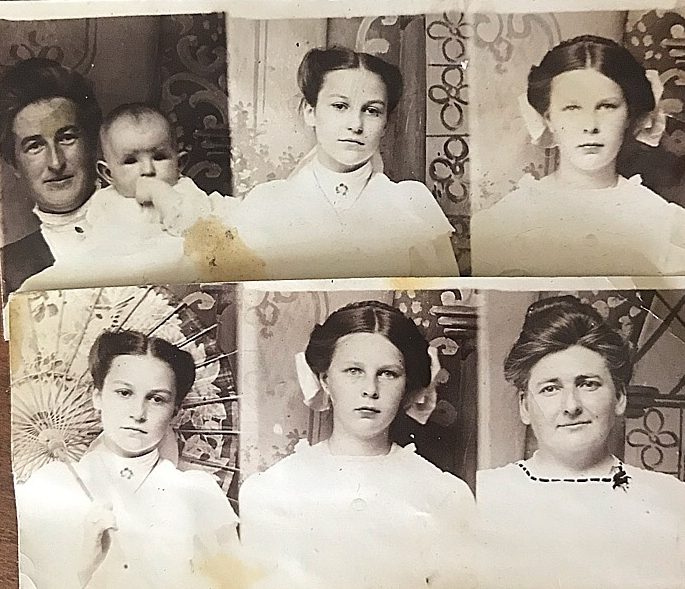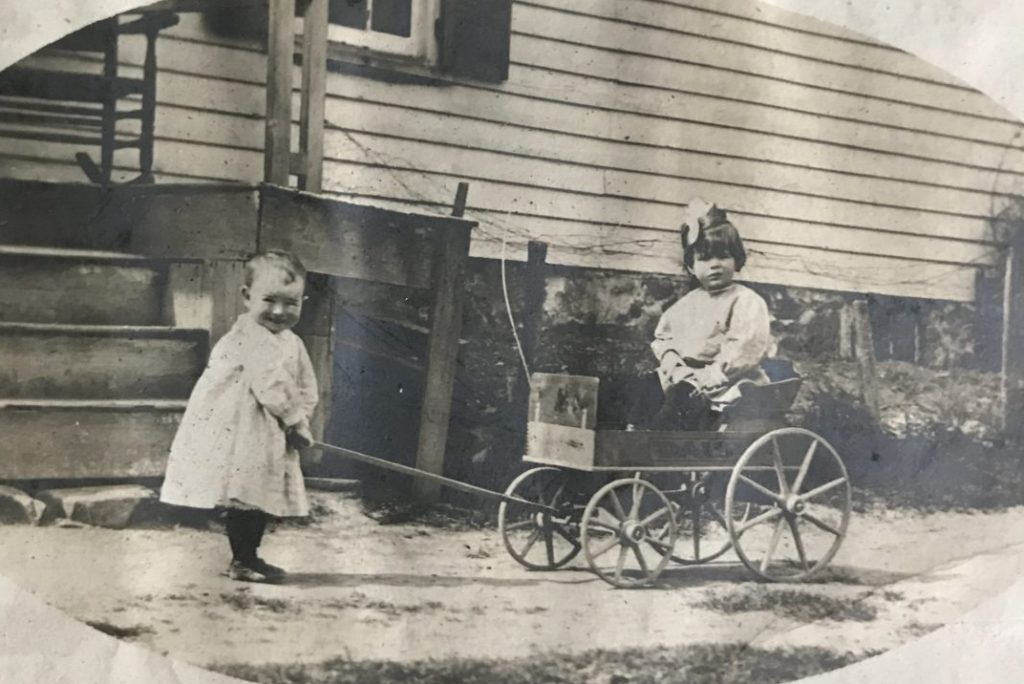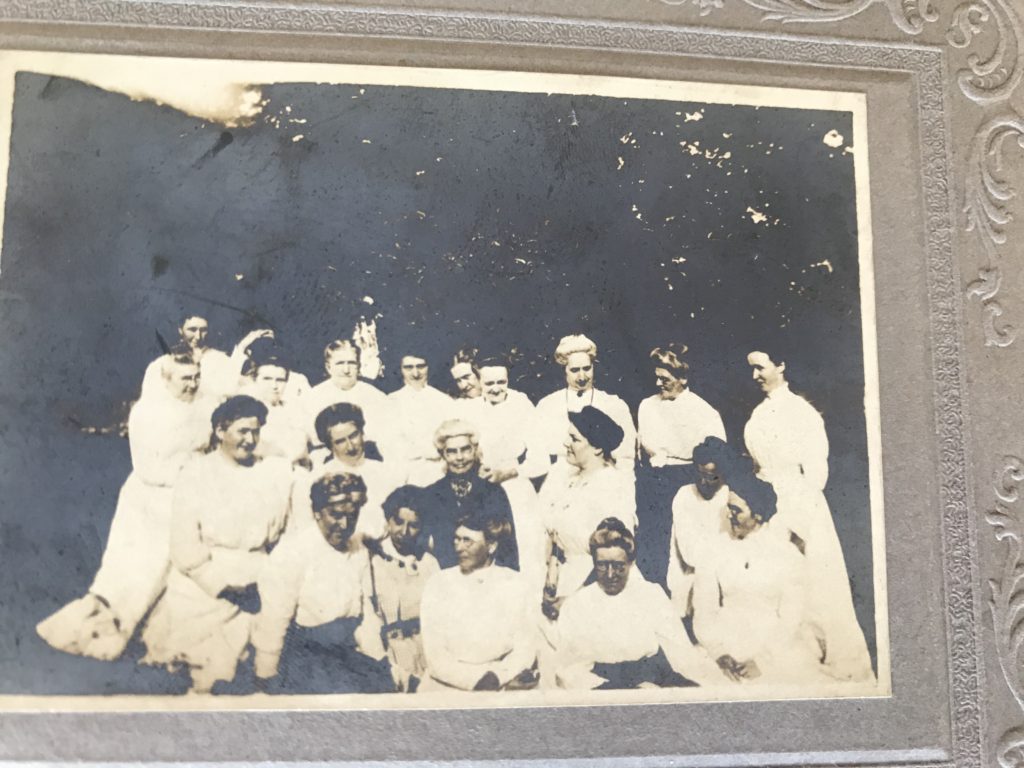Happy October 2020 to you all. For me, among other things, this means I get emails asking me to book fall family pictures in the park. I’ve seen beautiful autumnal portraits of other families who have done this: dancing around together in the fall foliage, kicking up leaves, looking blissful. The $350 price tag has always held me back. That buys a lot of corn stalks and Libby’s pumpkin. (In a normal year, also hay rides, apple picking and a blue grass band)!
Looking back in the album, however, it seems that my grandmother’s family did partake in this fall portrait ritual. Below you’ll see Eleanor, Merritt, Ferris, Clara and baby Marjorie gathered together under a tree that’s already given up its leaves. The other man (hatless) is Burr Copley, who – if you missed it – you can read more about here.

Two very important events taking place right around this time in American history were the production of the Model T, in Detroit, and the signing into law of the Revenue Act of 1913 by Woodrow Wilson. The act’s purpose was to lower tariffs (it was also called the Underwood-Simmons Tariff Act) on imported goods. It succeeded by lowering rates from 40% to 26% (!)
To offset those revenues, the Act introduced an income tax for the first time. It exempted anyone with income of less than $4,000, which in today’s dollars would be about $100,000. Those with incomes from $4,000 to $20,000 only had to pay 1%.
In other words, it really only affected a tiny part of the population. Its huge impact was to move away from using tariffs for government revenue (consumption-based) and instead to rely on levying taxes for government revenue (in the form of income tax).
I think I’ll save the Model T history for another post. We do have some old car pictures coming up in the album! The picture below of Ferris, Clara and baby Marjorie is interesting because it was labeled “After the Whooping Cough”. Apparently, my grandmother caught Pertussis as an infant and pulled through alright.
It must have been a terrifying ordeal. Coughing spells would become so severe in victims that they would take “whooping” gasps of air, turning red or purple in the face. In 1913, scientists had detected the germ that causes Whooping Cough (bacillus pertussis) but would not have a successful vaccine until the mid-1930s. Now, expecting mothers are given a TDaP vaccine to help protect babies, and babies get another dose at two months old.

I confess that it’s still funny to look at my grandmother as a baby. In a way, she sort of looks like herself. That baby is like, “It’s dinner time and you still haven’t washed your hands?”
I thought I would wrap up on a completely unrelated note. I wrote a poem (not confessing whether it is autobiographical or not) which I thought you might enjoy. Hope you also enjoy the long weekend!
Strength Training Failure
I bought myself weights and I YouTube'd a vid
She said "Lift like this. Yes you can." So I did
She said "You'll get stronger each day if you do"
and yes, if I lifted that "if" it'd be true
but now I choose easier channels instead
then trip on the weights on my way into bed.



